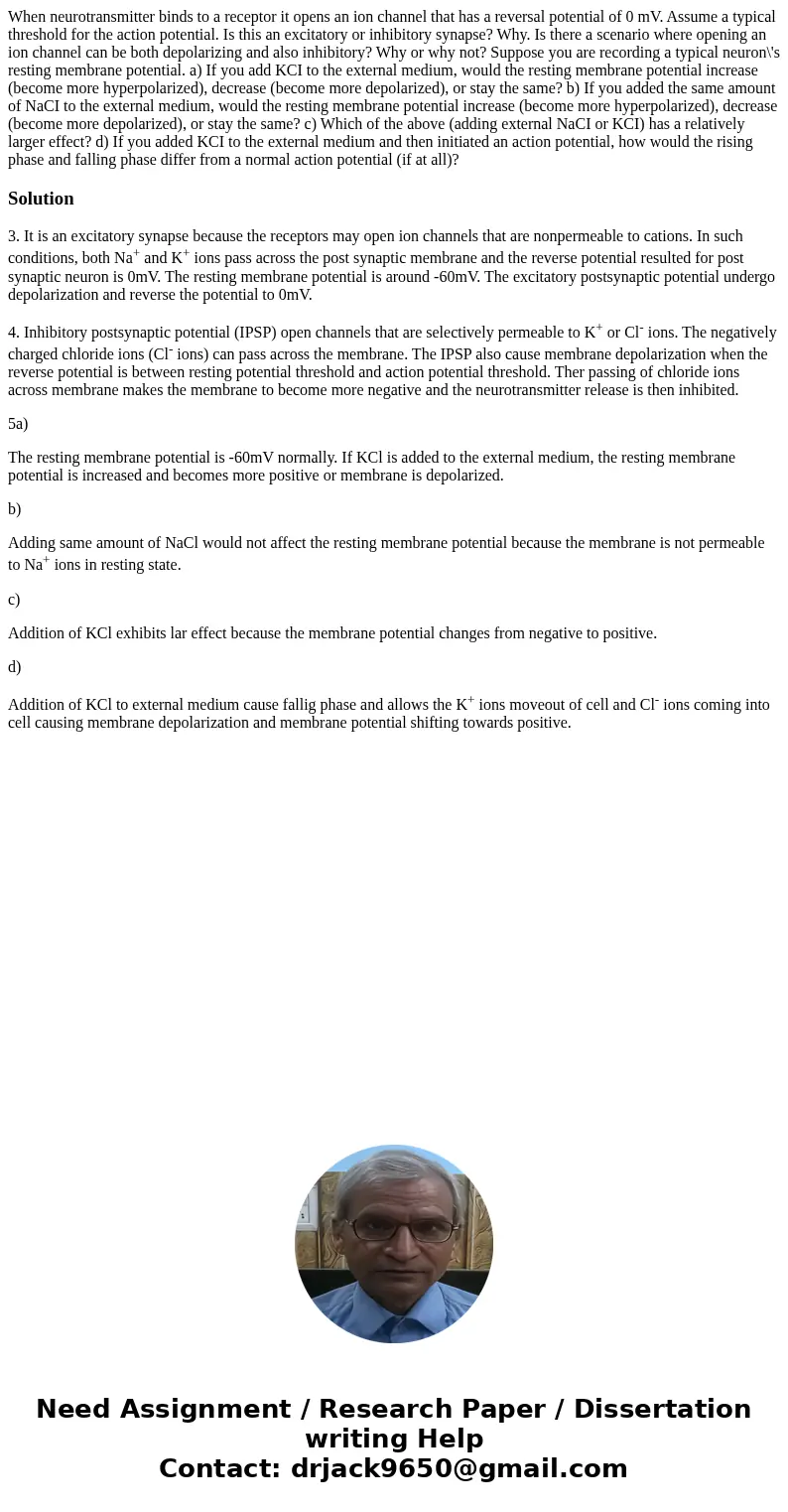When neurotransmitter binds to a receptor it opens an ion ch
Solution
3. It is an excitatory synapse because the receptors may open ion channels that are nonpermeable to cations. In such conditions, both Na+ and K+ ions pass across the post synaptic membrane and the reverse potential resulted for post synaptic neuron is 0mV. The resting membrane potential is around -60mV. The excitatory postsynaptic potential undergo depolarization and reverse the potential to 0mV.
4. Inhibitory postsynaptic potential (IPSP) open channels that are selectively permeable to K+ or Cl- ions. The negatively charged chloride ions (Cl- ions) can pass across the membrane. The IPSP also cause membrane depolarization when the reverse potential is between resting potential threshold and action potential threshold. Ther passing of chloride ions across membrane makes the membrane to become more negative and the neurotransmitter release is then inhibited.
5a)
The resting membrane potential is -60mV normally. If KCl is added to the external medium, the resting membrane potential is increased and becomes more positive or membrane is depolarized.
b)
Adding same amount of NaCl would not affect the resting membrane potential because the membrane is not permeable to Na+ ions in resting state.
c)
Addition of KCl exhibits lar effect because the membrane potential changes from negative to positive.
d)
Addition of KCl to external medium cause fallig phase and allows the K+ ions moveout of cell and Cl- ions coming into cell causing membrane depolarization and membrane potential shifting towards positive.

 Homework Sourse
Homework Sourse